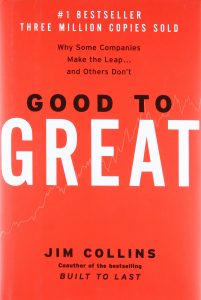
Influential management professor Jim Collins released the popular Good to Great: Why Some Companies Make the Leap…and Others Don’t in 2001. The book is really a research project led by Collins as a follow-up to his book Built to Last: Successful Habits of Visionary Companies. He researched hundreds of companies to identify sets of “good” companies where one became “great” while a close competitor failed. Collins and his team tried to discover what the “great” companies did differently from the comparison companies and the general market.
The book is a bestseller that has become a management strategy classic on how to grow a successful company and our team has given the book as a gift to numerous organizational leaders. Key points can be summarized by the image below – this post will summarize the key lessons any top executive can follow.
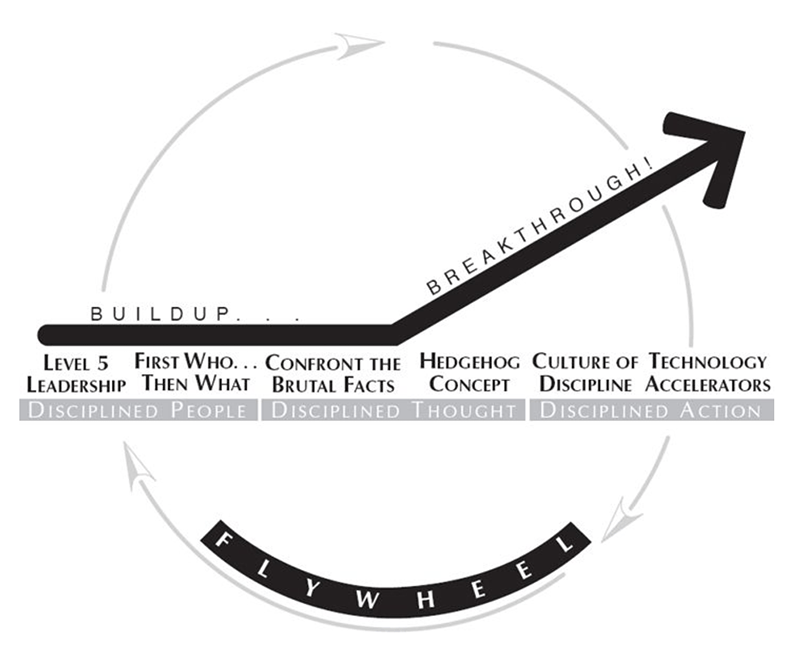
The Flywheel from Good to Great by Jim Collins
Collins learned that factors such as CEO compensation, technology, mergers and acquisitions, and change management initiatives played relatively minor roles in moving from Good to Great. Instead, Collins found that successes resulted from three main factors:
- disciplined people
- disciplined thought
- disciplined action
The book’s chapters cover each part of the Flywheel image and explain how the Great companies achieved breakthrough results. Lean East has summarized each chapter into a single lesson and converted the lessons into a process that can transform an organization from Good to Great.
Disciplined People
Level 5 Leadership: Jim Collins found a common characteristic of the great companies was great leadership. Specifically, Collins defined “Level 5 Leadership” as a key to moving from good to great.
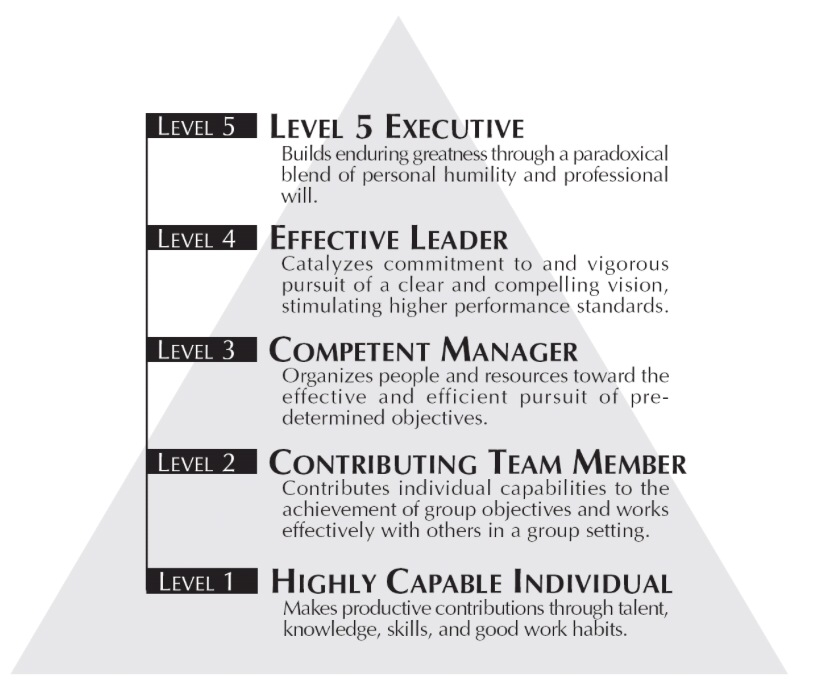
Level 5 leaders achieve better results than the “strategic and effective” Level 4 leaders. Level 5 leaders also have intense determination and profound humility. They remain humble learners while having a steadfast resolve. Level 5 leaders establish a set of core values focused on a higher purpose than mere profit generation. Collins found these leaders were committed to the long-term success of their organizations, and many rose to a leadership role from within the company.
“Mix personal humility with professional will”
Get the right people on the bus: People assume that new business leaders immediately begin by announcing where they’re going—by setting a new direction or by articulating a fresh corporate vision. In fact, the leaders of companies that went from good to great started not with “where” but with “who.” Start by getting the right people on the bus, the wrong people off the bus, and the right people in the right seats. Then review the core values and establish a vision.
“First Who, then What?”
Disciplined Thought
Confront the Brutal Facts: Companies transitioning from Good to Great must be willing to identify and assess defining facts in the company and in the larger business environment. Collins outlines a four-step process to promote awareness of emerging trends and potential problems:
1) Lead with questions, not answers.
2) Engage in dialogue and debate, not coercion.
3) Conduct autopsies without blame.
4) Build red flag mechanisms that turn information into information that cannot be ignored.
“Become aware of emerging market trends and potential problems”
The Hedgehog Concept: Simplicity leads to greatness. When confronted by predators, the hedgehog’s instinct is to curl up into a protective ball. This single response is simple and works as a response to any attack. To transition from Good to Great, companies should focus on doing one thing better than anyone else in the world. This single-function will become the organization’s “Hedgehog Concept.”
Collins suggests the following steps to help expedite this process:
- Determine what you can be best in the world at and what you cannot be best in the world at
- Determine what drives your economic engine
- Determine what you are deeply passionate about
“Do one thing better than anyone else”
Disciplined Action
A Culture of Discipline: Sustained great results depend upon an overarching organizational culture of discipline. The single most important discipline is fanatical adherence to the Hedgehog Concept by shunning opportunities that do not meet your singular “better than anyone else” criteria.
Disciplined thought followed by disciplined action is required. Do not assume this requires a tyrant leader who disciplines – this leads to highly dysfunctional organizations. Every team member is rather afforded the degree of personal empowerment and latitude that is necessary to bring the firm’s envisioned objectives into existence.
“Focus all your resources toward that area of strength”
Technology Accelerators: Good to Great organizations think differently about technology. They avoid fads, instead focusing on where technology can be an accelerator of momentum within the firm’s Hedgehog Concept. None of the Good to Great companies Jim Collins studied began their transformations with pioneering technology, yet they all became pioneers in the application of technology once they fit it within their Hedgehog Concept.
Collins characterizes the ideal approach to technology with the following cycle: “Pause — Think — Crawl — Walk — Run.”
“Carefully apply technologies that accelerate your key strength”
The Good to Great Process
The flywheel effect: A Good to Great transformation looks dramatic to customers and the market, but the beginnings may be unnoticed inside the company. The process is akin to pushing a large, heavy flywheel. It takes a lot of effort to get started and build energy, but with persistent pushing in a consistent direction over a long period, the flywheel builds momentum and eventually can’t be stopped – achieving breakthrough results.
Making decisions and taking actions that reinforce and affirm the company’s Hedgehog competencies initiate positive momentum. This results in the accumulation of tangible positive outcomes and serves to energize and earn the loyalty of the staff.
In contrast to the flywheel effect, the doom loop is characterized by reactive decision-making, an overextension into too many diverse areas of concentration, following short-lived trends, frequent changes in leadership and personnel, loss of morale, and disappointing results.
“Steady, consistent progress leads to eventual breakthrough”
The Good to Great process: The seven lessons from the book result in a basic process, as shown below.
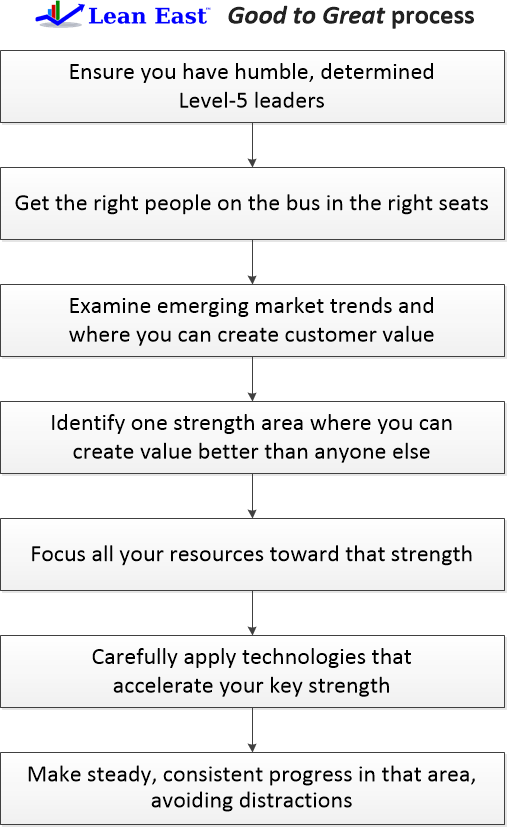
From Good to Great
The Lean East team would love to hear from any leaders who have used the ideas in this book to transform their organizations. This process takes time to see true results. We are concerned that many organizations and leaders do not have the patience and discipline to keep pushing, especially at the beginning when results are hard to see.
Check out the other studies by Jim Collins: Built to Last and Great by Choice.
Are you a founder, leader, or employee of a smaller, private company? Check out our 7 Lessons from Small Giants: Companies That Choose To Be Great Instead of Big by Bo Burlingham.
Please subscribe to our newsletter for monthly book summaries and learnings from our team. We will update our blog to share our experiences working with several companies currently on this journey soon.




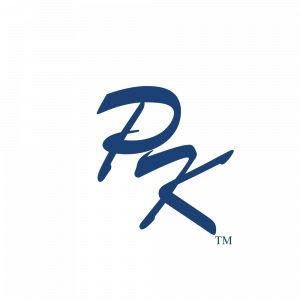

Great summary and great insights. Thanks a lot for sharing.
Great insights of the book!
one question: Are these Level 5 Leadership inspired von J. C. Maxwell’s 5-Levels of Leadership?
I am looking forward to reading your answer
Greetings, Ria
Hi Ria,
We are very happy that you enjoyed our summary of Good to Great!
We suspect that Collins was aware of and inspired by Maxwell’s levels of leadership. Note that there are similarities, but they are not the same thing . . .
Best, Steve
Good summary. Thanks for sharing with us.
Thanks for this excellent summary.
We are going through this process right now at Big West Marketing.
Hi Jordan,
I would love to hear more about your Good to Great journey.
What is going well? What could go better? What have you learned?
Please leave more info in a new comment below or email me privately.
Thanks,
Steve@leaneast.com
Is it possible to achieve this with staff who you cannot remove from posts if performance is an issue?
I work in the social sector and have staff which will not or cannot be moved, but still looking to achieve this improvement. I know the right people on the bus mentality, but will that ever be an option if the wrong people are on the bus, or is it possible to convert them to the right people??
Hi Allan,
We have supported social sector organizations and often have to deal with constraints, including around workforce contracts. We would need to discover the root cause problems in order to answer your questions. Why did the wrong people get on the bus? Do the people know where the bus is going? Did the bus change direction?
Some social sector clients we have worked with don’t know some of these basics facts about the organization.
Attempting to convert “wrong” people into “right” people requires bureaucracy which ultimately destroys the culture of discipline and drives away self motivated staff who don’t want to be micromanaged. That’s what the research in the book indicates.
Thanks for Sharing with us, I’ve started to embark in this yesterday of Moving from Good to Great with our Coach at work. This is not an easy task but as you mentioned that when you start spinning a wheel in the beginning it not easy but eventually when the goes on it became easy, so yeah I am looking forward to learn more from “Good to Great “.
Thanks for your comment! Yes, it takes time to develop the right habits and build momentum but once you do you will be unstoppable!
I agree that you shouldn’t be reactionary to business swings. I need a consultant to help us out in the office. I’ll have to consider getting a consultant to help me out with detecting fraud in the department.
I really enjoyed this post on “Good to Great”! The insights on leadership and culture really resonated with me. It’s fascinating to see how companies that focus on empowering their teams and staying disciplined in their approach can achieve greatness. The concept of the Hedgehog Principle is particularly thought-provoking. Thanks for sharing these valuable lessons!
This post beautifully encapsulates the essence of “Good to Great.” The emphasis on disciplined people, thought, and action is especially enlightening. I appreciated how you tied the lessons to Lean principles—it’s a perfect blend! Can’t wait to implement these insights in my own work. Thank you for sharing!
This post really nails the key takeaways from “Good to Great.” I especially resonated with the importance of disciplined people and the Hedgehog Concept. It’s fascinating how organizations can elevate themselves by focusing on what they do best. Thanks for sharing these insightful lessons!
This post on “Good to Great” really distills the key lessons into actionable insights! I found the emphasis on disciplined people and the importance of a strong company culture particularly resonant. It’s inspiring to see how these principles can be applied to drive real change in any organization. Great read!
I really enjoyed this post! The insights on leadership and the importance of having the right people on the team resonated with me. It’s inspiring to see how small changes can lead to significant improvements in any organization. Thank you for sharing these valuable lessons!
This post on “7 Lessons from Good to Great” really resonated with me! I especially appreciated the emphasis on the importance of leadership and building a strong team culture. It’s inspiring to see how consistent effort and a clear vision can drive extraordinary results. Thanks for sharing these insights!
This post on “7 Lessons from Good to Great” really resonated with me! I loved the emphasis on discipline and the importance of having the right people on your team. These insights are so applicable, not just for businesses but for personal growth as well. Thank you for sharing such valuable lessons!